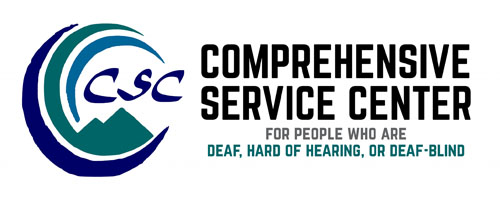How the CSC makes its media accessible
Aloha! from Comprehensive Service Center for the Deaf, Hard of Hearing, or Deaf-Blind (CSC)! My name is Kon Davis and I am one of the CSC staff who participated in CSC Digital Content Compliance Accessibility training conducted by Tom Conway on February 20th, 2019. As a DeafBlind employee, this training was full of wonderful, beneficial information about accessibility through media. Part of my job is to create flyers and ASL vlogs containing announcements, important updates, event information, and more, and this training gave me a new perspective on how to ensure that the flyers and ASL vlogs are accessible for the deaf-blind community.
This training covered common accessibility issues, remediation resources, alternate text, captioned videos, tagged text & structured headings, links (purposeful navigation), keyboard navigation, alternate formats (quick fix), screen readers, and questions & answers. I learned that it is possible to create alternate text (usually to speech) to describe images, photographs, infographics, graphics, charts, tables, and translations. Examples were shown and we had to decide on which ones were more casual or formal or professional. I thought I knew enough about how to add captions to the videos, but I never quite realized that there were more to it, such as the difference between subtitles, open captions, closed captions, and audio descriptions within the vlogs and how they differ in accessibility.
Also, I did not realize that it was vital to state name or purpose with the links instead of the URL addresses and that it’s more accessible to label the links with both image and text for navigating. Not only that, it is also important to make sure we use appropriate program features for the Screen Readers to be able to navigate and identify what is visually seen on the pages.
Have you ever found yourself stuck with a mouse that wouldn’t work? You can use keyboard navigation! You can easily click on certain buttons on your keyboard to navigate through your computer or internet! Technically, this is called Assistive Technology.
Text transcripts of audio or video files were explained in this training as well and I’ve been aware about the text transcripts for a long while, but this training showed me how important it is to include text transcripts. Not every deaf-blind people can view the videos just fine. There are those who cannot or can barely see the whole screen and they depend greatly on the text transcripts. Admittedly, I took this one for granted in the past because, even though I am DeafBlind, I still have vision. I can view the ASL videos without relying on the transcripts. I had assumed that the deaf-blind community were all the same regarding this issue. That the transcripts were just a convenience. Boy, was I wrong!
After participating in this training, I’ve learned that I need to be more mindful about the differences within the deaf-blind community when it comes to media accessibility. I am more motivated to include text transcripts for the flyers and ASL videos. Accessible media seemed so daunting before, but now I am ready to make a better effort for the deaf-blind community. Mahalo, Tom Conway, for providing this training and its benefits to CSC!
